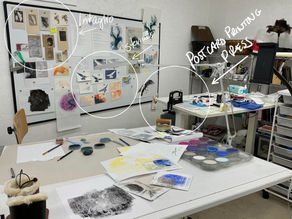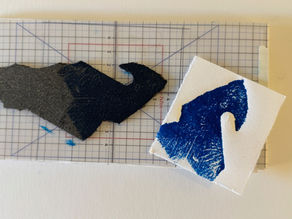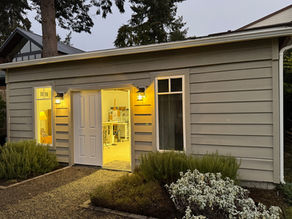Now We're Cooking
- Caroline Clarke

- Apr 9, 2024
- 2 min read

The color studies are speeding up as I find the rhythm of doing: Start with the middle values and hue, desaturated colors for the most part. Build out from there. Get close enough — stop. Pin the study up on the white board and take the lessons.
The goal is to have the color study feel like the thing I’m trying to reproduce.
This week, reference from two masters of color — Ferenc Pintér and Ben Shahn — both of whom preferred painting with egg tempura.
Ferenc Pintér — 1988 Pasolini’s Reading Guide. Applying the lessons from last week, I select an image that strikes me and jot down notes about the color space. Then swipe with the pan pastels to find what combinations might work from the colors I’ve got. Starting with the middle values and hues, I build up the color study on the white paper.

Lesson: With the pan pastels, nothing is the right hue or value on the first go. I’ve got to put down something close, then adjust it with the next pass. From there, it’s the familiar back and forth to find the color relationships.
Ben Shahn — 1946 Hunger. To understand the color usage in this image, I have to first understand the ideas at the center of the story. The tone and mood, the choice of red. I spend some time jotting down the emotion of the piece and the story it evokes for me — of a vulnerable and isolated boy, but one whose gaze says he still knows his worth. Then, given the low major key, I roll out a black background in oil paint, and go straight to work finding the colors.

Lesson: The question to keep in mind as I do the study is, does it feel like the thing Shahn was trying to do?

A closer look:
The humble white board.
Walking past my color studies multiple times a day provides direct feedback, helping to hardwire what I’ve just learned.

























Comments